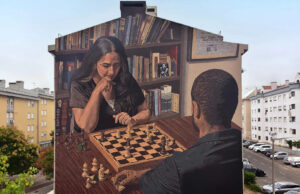In the ever-shifting landscape of skateboarding where aesthetics, aggression, and technicality constantly jostle for dominance, Elijah Berle’s “Heatwave” part for Spitfire Wheels is a scorched earth manifesto. It’s not just a video part—it’s a statement of intent, a reaffirmation of Berle’s uncompromising style and his deep-rooted connection to the sun-baked streets of Southern California. With Heatwave, Berle once again proves that he doesn’t chase trends; he defines them.
From the first grind to the final slam, Heatwave is a ride through Venice grit, fast lines, high-consequence ledges, and raw urban energy—anchored by the kind of style that can’t be taught, only earned.
Speed, Style, and Surgical Precision
Elijah Berle has never been the kind of skater who overcomplicates a spot. His greatness lies in efficiency—his uncanny ability to do the right trick, at the right time, on the right terrain. In Heatwave, that clarity of vision is on full display. His skating is clean, violent, and perfectly weighted. No flourish is unnecessary. No second angles needed.
There’s a moment midway through the part when Berle blasts a backside flip down a ten-stair with a composure that feels cinematic, yet completely devoid of drama. It’s all muscle memory and grit. That’s the paradox of Berle’s style—raw power with refined grace.
He isn’t trying to impress. He’s just showing you how it’s done.
A Tribute to Terrain
Filmed primarily across Los Angeles with hints of global flavor, Heatwave is rooted in the very surfaces that shaped Berle. The city’s cracked sidewalks, schoolyard rails, and alleyway drops are as much a part of his skating as the tricks themselves.
Whether he’s gapping from a driveway into traffic or bombing a steep hill into a frontside wall bash, every clip affirms Berle’s symphonic relationship with terrain. He reads the city like a blueprint—and leaves his signature in concrete.
But this isn’t nostalgia. This is evolution. Berle’s part pays homage to traditional LA spots while pushing the boundaries of how they’re skated. He takes us to familiar places—but does unfamiliar things.
The Spitfire Effect
As a brand, Spitfire Wheels has long championed the uncompromising edge of skateboarding—faster, grittier, realer. Their iconic slogan “Live to Burn” isn’t metaphor; it’s ethos. So it makes perfect sense that Berle, with his aggressive finesse and unapologetic energy, is one of the brand’s torchbearers.
Heatwave is more than a showcase of one skater’s talent—it’s a portrait of what Spitfire stands for. The filming is tight, the spots are crusty, the soundtrack is loud. It doesn’t overthink itself. Like the best parts in skateboarding, it moves fast, hits hard, and leaves a mark.
And visually, it carries the unmistakable pulse of Spitfire’s media—edited with an eye for impact rather than polish. Every cut, every fisheye pan, every ender feels designed to let Berle’s skating do the talking.
Footwear, Fit, and Flow
One of the subtler triumphs of Heatwave lies in its sartorial cohesion. Berle’s fit—oversized work pants, Vans Half Cabs, vintage logo tees—doesn’t just reflect style; it reflects a skater’s armor. There’s function in every fabric choice. And while this isn’t a fashion film, Berle’s aesthetic has long made waves across streetwear and skate culture alike.
His sponsor lineup—Vans, FA, Spitfire—forms an identity that’s sharp-edged and no-nonsense. That identity translates across every line he lands. And in Heatwave, it feels fully realized.
Homage Without Hype
There’s no over-branding, no ego cuts, no interviews breaking up the action. Heatwave is pure skating. But under the surface, there’s reverence. Whether intentional or subliminal, Berle’s skating evokes some of the best to ever do it—Tom Penny’s flow, Andrew Reynolds’ pop, Gino’s lines, AVE’s power. But he isn’t copying. He’s channeling.
This is the magic of a well-crafted part—it connects the present to the past without breaking stride. Heatwave feels immediate and vital, but it’s also steeped in lineage.
The Soundtrack and the Burn
True to form, Spitfire delivers a punk-rooted, guitar-grinding soundtrack that perfectly matches Berle’s cadence. The music is fast, sometimes chaotic, but never outpaces the skating. It complements rather than distracts. It’s the kind of audio-visual sync that elevates a good part to a memorable experience.
In the end, what lingers most isn’t just a trick or a song—but a mood: sweaty asphalt, summer sun, and the smell of burnt urethane. Heatwave doesn’t just live in your feed—it lives in your bones.
A Love Letter to Lineage
If Berle’s previous parts hinted at potential, Heatwave feels like a declaration. It shows a skater fully in control of his tools, his story, and his city. It’s a love letter to Venice, to LA, to the legacy of street skating in California—but written without sentimentality.
Berle doesn’t beg for a spot in skate history. He just goes out and earns it, clip by clip, fall by fall. And Heatwave—with its raw execution and total lack of filler—cements his place among the most complete skaters of his generation.
Final Thoughts: Flame-Proof and Built to Last
In an age where algorithm-driven clips and branded content dominate the skate media landscape, Heatwave feels like a breath of scorched, honest air. It’s a reminder that the best skating doesn’t come from corporate campaigns or social metrics—it comes from skaters like Elijah Berle, who put in the hours, the slams, and the sweat.
Spitfire’s Heatwave isn’t just Berle’s newest part—it’s a chapter in a larger book that’s still being written. And if this is any indication, Berle’s not slowing down—he’s just warming up.
No comments yet.







